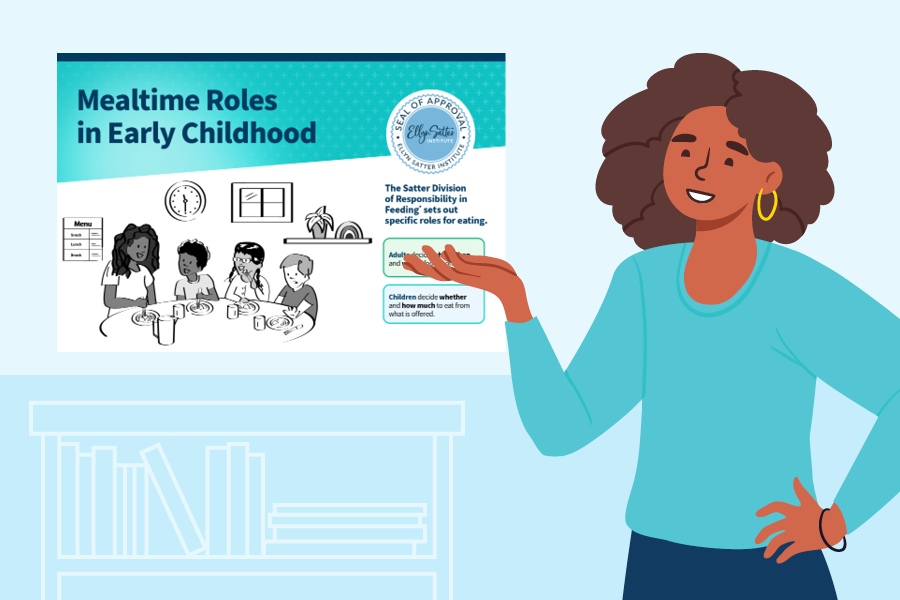Discover how you can support children’s journey as they learn to eat a variety of foods.
How the Division of Responsibility can ease stress at mealtimes
The Satter Division of Responsibility in Feeding is a way of approaching feeding and eating that gives adults and children different roles at mealtimes.*
Created by Dietitian and renowned feeding expert Ellyn Satter, this evidence-informed approach to feeding has been thoroughly researched and is recommended by groups such as Dietitians of Canada and Alberta Health Services. Following the Division of Responsibility supports children in the long-term process of learning to eat a variety of foods and to make their own food choices.
What the Division of Responsibility looks like in early childhood
Clearly understanding your role when feeding young children – and not trying to do their jobs – contributes to relaxed and supportive eating environments.
Parents and other caregivers decide what foods are served for meals and snacks.
- Be considerate of the children’s different food experiences, abilities, and preferences when deciding what foods to serve.
- Offer a variety of foods each day.
- Offer everyone at the table the same foods whenever possible. Avoid making individual meals.
In some early childhood settings, parents and other caregivers pack and send food for meals and snacks. Remember, the foods children bring from home reflect their families’ needs and resources. Trust that families are doing their best.
Parents and other caregivers decide when food is eaten.
- Schedule meals and snacks at regular, consistent times that work for your schedule and needs.
- Offer only water between meals and snacks.
Parents and other caregivers decide where food is eaten.
Provide children with a clean, comfortable place to sit down and eat.
- Limit distractions such as toys and electronics while eating.
Children decide whether and how much to eat from what was packed or served.
- Trust children to decide whether or not to eat. Giving up control over whether a child eats is often the hardest part of the Division of Responsibility.
- Respect children’s decisions about how much they eat from the foods you offer.
- Allow children to eat food in the order they choose.
- Trust children when they tell you they are full or they are hungry for more.
How to share this information with families
The Division of Responsibility is for educators and families. But it may be different from what some adults experienced in childhood. Be patient with yourself and the families you work with while learning about mealtime roles. Learning takes time, practice, and support.
Here are some ideas for sharing the Division of Responsibility with families so they have ongoing opportunities to learn:
- Introduce your approach to feeding during orientation.
- Display a Mealtime Roles poster
- Feature the Division of Responsibility in family communications (e.g., newsletters, handbook, website).
This article was reviewed by the Ellyn Satter Institute.
*Ellyn Satter Institute. 2022. The division of responsibility in feeding. ellynsatterinstitute.org. Accessed February 14, 2022.


